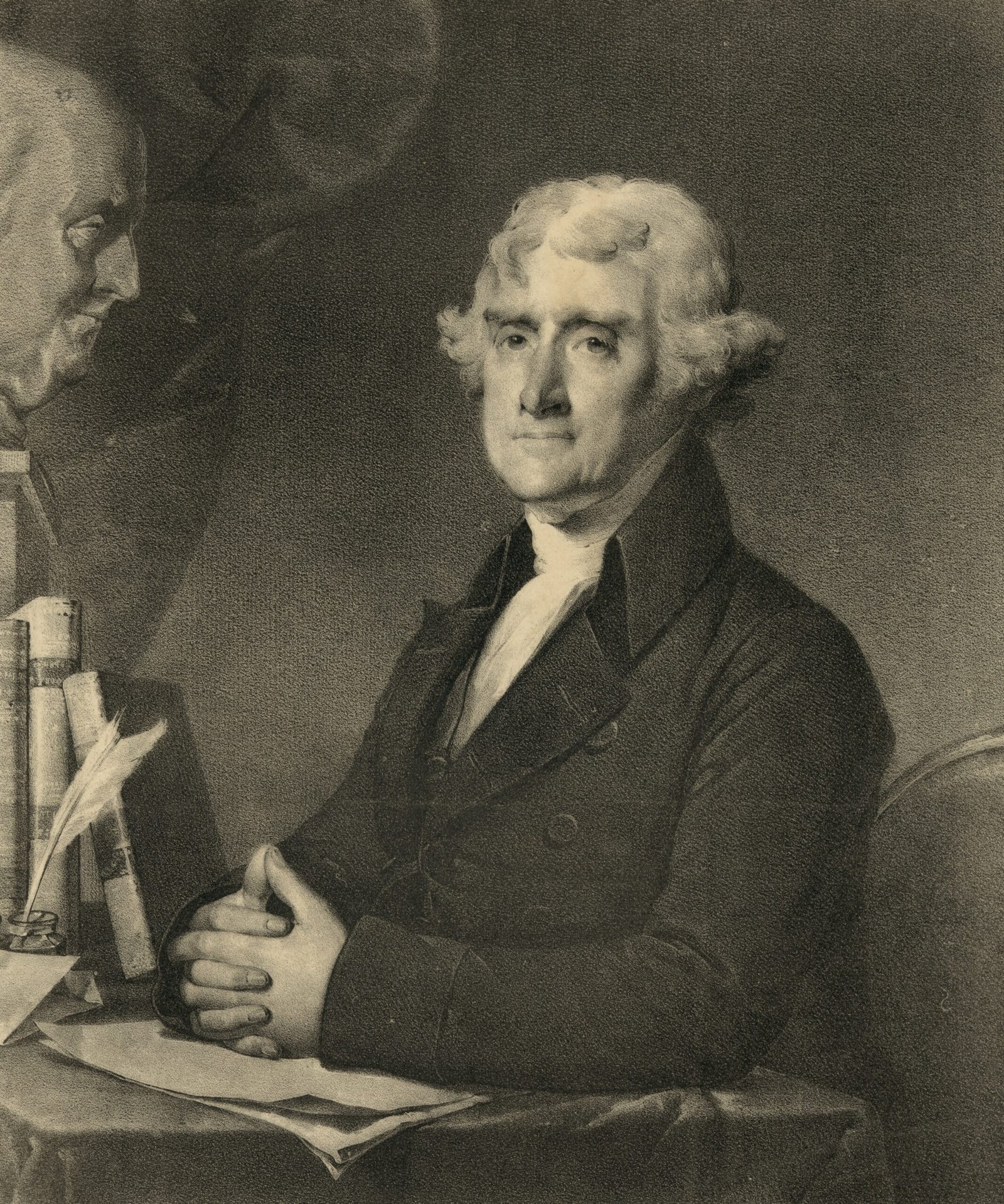The Birth of a Nation: The Declaration of Independence
Introduction

The Declaration of Independence, adopted on July 4, 1776, symbolizes a pivotal moment in the narrative of the United States. The decades leading to this landmark event were marked by rising tensions between the American colonies and the British Crown. The imposition of various taxes without representation, such as the Stamp Act and the Townshend Acts, incited widespread resentment among colonists, fostering a growing desire for autonomy and self-governance. Economic burdens and political disenfranchisement played a significant role in shaping colonial attitudes toward independence.
At its core, the Declaration of Independence articulated fundamental principles that would come to define the United States. It asserted the inalienable rights of life, liberty, and the pursuit of happiness, emphasizing the belief that governments are instituted to protect these rights, deriving their powers from the consent of the governed. This revolutionary document not only galvanized the colonies in their struggle for independence but also resonated globally, inspiring movements for democracy and human rights across nations.
The impact of the Declaration of Independence extended far beyond the boundaries of North America. It served as a beacon of hope for oppressed peoples worldwide, demonstrating the possibility of challenging established authority. The bold step of declaring independence fundamentally transformed the trajectory of human governance, laying the groundwork for the development of a nation devoted to the principles of freedom and equality.
The Revolutionary War: Struggle for Sovereignty
The Revolutionary War, which lasted from 1775 to 1783, marked a significant turning point in American history as the thirteen colonies fought against British rule in their quest for independence. This conflict emerged from growing tensions between the colonists and the British government, primarily due to taxation without representation and other oppressive measures imposed on the colonies. Major battles such as the Battle of Bunker Hill, the Battle of Saratoga, and the Siege of Yorktown played crucial roles in shaping the course of the war, resulting in pivotal victories for the American forces.
Key strategies employed by the Continental Army, under the leadership of George Washington, included guerrilla tactics and the effective use of espionage. Washington’s ability to adapt and strategically withdraw whenever necessary significantly contributed to the persistence of American forces. The use of alliances, particularly with France, was instrumental in providing the colonies with military support and funding, directly influencing the eventual success against the British. The Franco-American alliance, formalized in 1778, not only bolstered military resources but also validated the American struggle for sovereignty on the global stage.
Beyond military engagements, the Revolutionary War brought profound social and economic changes to American society. The war altered the political landscape, fostering a sense of unity among the colonies, which had previously operated independently. With the war’s conclusion, discussions surrounding governance, individual rights, and the future of the nascent nation began to take center stage, paving the way for the establishment of the United States Constitution. Economically, the war disrupted traditional trade relationships and forced colonies to look inward, with the promotion of local industries becoming paramount in the face of British blockades.
The legacy of the Revolutionary War is not merely confined to the establishment of the United States; it set a precedent for future struggles for independence and self-governance across the globe, underscoring the universal desire for freedom and democracy.
Forming a New Government: The Constitution and Bill of Rights
The formation of a new government following the United States’ Declaration of Independence in 1776 marked a pivotal moment in history. The early leaders of the nation faced the formidable task of creating a unified framework for governance. Initially, the Articles of Confederation served as the country’s first constitution. However, it quickly became evident that this loose association of states was inadequate for addressing the complexities of national governance, leading to challenges in economics, defense, and interstate relations.
In 1787, the Constitutional Convention convened in Philadelphia with the ambitious goal of drafting a new constitution that would better serve the emerging nation. The delegates grappled with various issues, including the allocation of power between state and federal governments, representation, and the balance of interests among diverse regions. The debates were vigorous and contentious, reflecting the differences in opinions among the founding fathers. Ultimately, the new Constitution was ratified in 1788, establishing a framework that included a system of checks and balances among the three branches of government: legislative, executive, and judicial.
One significant outcome of this process was the creation of the Bill of Rights, which was ratified in 1791. The Bill of Rights comprises the first ten amendments to the Constitution and serves to protect individual freedoms and rights, addressing the concerns of Anti-Federalists who feared the potential for tyranny in a strong central government. These amendments guarantee essential liberties such as freedom of speech, religion, and assembly, as well as the right to bear arms and protections against unreasonable searches and seizures. The introduction of the Bill of Rights not only enshrined fundamental liberties into U.S. law but also set a precedent for the ongoing evolution of civil rights and liberties in the nation.
Expansion and Conflict: Manifest Destiny
Manifest Destiny, a term that captured the belief that the expansion of the United States across the North American continent was both justified and inevitable, played a pivotal role in shaping the nation’s history. Rooted in the early 19th century, this concept was propelled by a combination of nationalism, a sense of divine mission, and the pursuit of economic opportunities. Proponents argued that it was America’s destiny to spread democracy and civilization, often overlooking the consequences for the indigenous populations and other nations involved.
One of the most significant milestones in this era was the Louisiana Purchase in 1803, which effectively doubled the size of the United States. Acquired from France for a mere $15 million, this vast territory provided ample land for expansion and was seen as a means to fulfill the nation’s manifest destiny. The acquisition not only opened new economic opportunities for settlers but also intensified the conflict with Native American tribes, as Americans began to claim their ancestral lands.
The ideological fervor of Manifest Destiny further fueled the Mexican-American War (1846-1848), which resulted in significant territorial gains for the United States, including present-day California, Nevada, and Utah. This war was often justified by the belief that American settlers had a divine right to these lands, despite the fact that they were inhabited by Mexican citizens and Indigenous peoples. The repercussions of this conflict reverberated across the nation, contributing to increasing tensions over slavery and further displacing Native American communities.
As America expanded westward under the banner of Manifest Destiny, the concept fundamentally shaped the national identity. It fostered a belief in American exceptionalism but also left a legacy of conflict, displacement, and ethnic tension. Through these historical events, it becomes evident that the pursuit of expansion was accompanied by significant socio-political challenges and ethical dilemmas that would influence American society for generations to come.
The Civil War: A Nation Divided
The Civil War, a pivotal conflict in American history, emerged from a complex interplay of factors, prominently featuring the contentious issues of slavery, state rights, and sectionalism. The deep-seated divisions between the Northern and Southern states culminated in a struggle that would test the very foundation of the nation. Central to the discord was the institution of slavery, which had become a linchpin of the Southern economy and social order, while the North increasingly viewed it as a moral abomination that must be eradicated.
This discord was exacerbated by the doctrine of state rights, with Southern states advocating for their autonomy to maintain the institution of slavery. The election of Abraham Lincoln in 1860, who opposed the expansion of slavery into new territories, triggered a wave of secessions. By April 1861, the war began in earnest with the Confederate attack on Fort Sumter, marking a significant point of no return.
As the war unfolded, numerous key battles illustrated the ferocity of the conflict. Notable engagements such as the Battle of Gettysburg and the Siege of Vicksburg highlighted shifting tides in the war. The Union’s victory at Gettysburg, in particular, is often cited as a turning point, stemming the Confederate advance into the North. In 1863, the Emancipation Proclamation issued by Lincoln transformed the war’s moral scope, declaring the freedom of enslaved individuals in Confederate-held territories and reshaping the Union’s war aims.
Ultimately, the defeat of the Confederacy in 1865 leveraged profound changes across American society. The Civil War resulted in the abolition of slavery through the Thirteenth Amendment and set the stage for Reconstruction. This era aimed to reintegrate the Southern states and address the rights of formerly enslaved individuals. The conflict and its aftermath resonated deeply, embedding issues of race, civil rights, and federal authority into the American consciousness, elements that continue to echo through today’s societal discourse.
Reconstruction and the Fight for Rights
The Reconstruction era, spanning from 1865 to 1877, emerged in the aftermath of the Civil War, marking a critical period in the United States as the nation sought to rebuild and redefine itself. The primary focus during this time was the South, where efforts were made to reintegrate the Confederate states into the Union and establish a new social order. Central to Reconstruction was the integration of freed slaves into a society that had long denied them basic rights and freedoms. Legislation such as the Thirteenth, Fourteenth, and Fifteenth Amendments aimed to secure civil rights for African Americans, granting them freedom, citizenship, and the right to vote. These constitutional measures symbolized a significant shift in national policy and values.
However, the journey towards equality was fraught with challenges. Many Southern whites opposed these changes vehemently and sought to maintain their socio-economic dominance. This led to the rise of various resistance groups, most notably the Ku Klux Klan, which engaged in terroristic violence against African Americans and their allies. This hostile environment not only threatened the lives of many but also undermined the legislative achievements that had been made, creating a climate of fear and oppression.
The federal government responded by implementing military Reconstruction, which aimed to protect the rights of freedmen and oversee the reintegration of Southern states. Despite these efforts, the period was marked by significant setbacks. By the end of the 1870s, the withdrawal of federal troops and the subsequent implementation of Jim Crow laws signaled a regression in the fight for civil rights. These developments laid the groundwork for decades of systemic racism and disenfranchisement that would persist until the Civil Rights Movement of the mid-20th century. Thus, the Reconstruction era embodies both the aspirations for a more inclusive society and the tumultuous realities that challenged these ideals.
Industrialization and the Rise of Modern America
The period following the American Civil War marked a significant transition in the United States, characterized by rapid industrialization that shaped the nation’s socio-economic landscape. The late 19th century was pivotal, as innovative technological advancements began to transform industries, particularly in manufacturing, transportation, and communications. Inventions such as the steam engine, telegraph, and later, the telephone and electricity, played integral roles in enhancing productivity and efficiency across various sectors.
As factories multiplied, urban centers flourished, attracting individuals from rural areas and immigrants searching for employment opportunities. The promise of jobs in burgeoning industrial hubs such as New York, Chicago, and Detroit led to a significant demographic shift. Cities evolved into melting pots of cultural diversity, contributing to the rich tapestry of American society. This urbanization was dual-faceted; while it presented opportunities for advancement and prosperity, it also brought challenges, including overcrowding, inadequate housing, and the rise of tenement living conditions.
The industrial revolution also redefined labor dynamics in the United States. The emergence of factory-based jobs spurred the growth of unions as workers sought to protect their rights and improve working conditions. The struggle for labor rights culminated in numerous strikes and protests, emphasizing the relationship between industrialists and laborers. This period ultimately laid the groundwork for significant reforms, such as labor laws and worker protections, that would shape the modern workplace.
Furthermore, the economic expansion linked the United States to the global market. As industries prospered, the nation began exporting goods, thus establishing itself as a formidable player on the international stage. Industrialization not only revolutionized American life but also facilitated the United States’ rise as a global power, setting the foundation for future advancements that would continue to propel the nation forward.
World Wars and Their Aftermath

The United States’ participation in both World Wars marked a significant turning point in its history, drastically reshaping the national landscape across military, economic, and social spheres. During World War I, which lasted from 1914 to 1918, the U.S. initially maintained a neutral stance, only to enter the conflict in 1917 due to various provocations, including unrestricted submarine warfare and the Zimmerman Telegram. This entry not only showcased the U.S. military’s capabilities but also solidified its role as a key international player, while the war effort stimulated economic growth through increased production and job opportunities.
World War II further amplified these trends, from 1939 to 1945. The attack on Pearl Harbor in 1941 prompted a full-scale mobilization of resources, resulting in an unparalleled military expansion as the nation produced vast quantities of war matériel. The economic implications were profound, pulling the United States out of the Great Depression and setting the stage for a post-war economic boom. Socially, the war catalyzed shifts in demographics, as women entered the workforce in unprecedented numbers and African Americans began to advocate more vigorously for civil rights, setting the foundation for the later Civil Rights Movement.
The aftermath of both wars also ushered in significant changes in international power dynamics. The United States emerged as one of the two superpowers, alongside the Soviet Union, leading to the Cold War—a period characterized by political tension, military competition, and ideological conflict. This new global order saw America take on an increased role in international affairs, leading initiatives such as the Marshall Plan and establishing NATO, which underscored its commitment to containing communism. As the Cold War unfolded, the consequences of the World Wars continued to shape American foreign policy and domestic life, establishing a legacy that would influence future generations.
Civil Rights Movement: Striving for Equality
The Civil Rights Movement of the 1960s marks a pivotal period in American history, characterized by the relentless pursuit of racial equality and justice. Fueled by the systemic racism embedded in societal institutions, this movement aimed to dismantle oppressive structures and secure civil rights for African Americans. Central figures, such as Martin Luther King Jr., Malcolm X, Rosa Parks, and many others, emerged as formidable leaders, inspiring countless individuals to join the struggle for equality.
One of the most recognizable events of the Civil Rights Movement was the 1963 March on Washington, where Martin Luther King Jr. delivered his iconic “I Have a Dream” speech. This gathering underscored the collective yearning for freedom and justice. Another significant milestone was the passage of the Civil Rights Act of 1964, which outlawed discrimination based on race, color, religion, sex, or national origin. This landmark legislation was a crucial step towards eradicating segregation and ensuring equal opportunity in various facets of American life, including education and employment.
Despite these successes, the struggle for civil rights did not end with legislative victories. The continued fight against systemic injustices demonstrated the enduring nature of racial inequality in the United States. Ongoing issues such as police brutality, voter suppression, and economic disparity highlighted that the road toward true equality remains fraught with challenges. Contemporary movements, such as Black Lives Matter, echo the goals of their predecessors, advocating for justice in light of modern adversities faced by marginalized communities.
As society reflects on the legacy of the Civil Rights Movement, it is evident that its impact resonates profoundly within contemporary America. The relentless efforts of courageous activists have paved the way for significant social change, reinforcing the importance of advocacy in the quest for equality.
Contemporary America: Challenges and Triumphs
Contemporary America stands as a testament to the complexities of nationhood, shaped by an evolving landscape that reflects both its challenges and triumphs. Political polarization has become a prominent feature of modern American society. This division manifests itself in various forms, including partisanship in governance, media representation, and social discourse, often hindering collaborative efforts that are essential for national progress. As citizens navigate an increasingly fragmented political atmosphere, the impact on legislative effectiveness becomes evident, prompting calls for greater civic engagement and dialogue across ideological lines.
Economic inequality also plays a critical role in contemporary America’s narrative. The gap between the wealthy and the economically disadvantaged continues to widen, leading to heightened discussions about wealth redistribution, access to quality education, and healthcare. This disparity not only threatens societal cohesion but also raises important questions about the American Dream. The ongoing struggles faced by marginalized communities underscore the urgent need for policies that promote equity and accessible opportunities for all citizens.
Moreover, social justice issues have garnered significant attention in recent years, pushing various movements to the forefront of national consciousness. The demand for racial equality, gender rights, and LGBTQ+ advocacy illustrates a shift towards greater inclusivity in the American ethos. These movements challenge existing norms and seek to redefine the cultural landscape of the nation, emphasizing the importance of representation and justice for historically underrepresented groups.
Despite these challenges, America continues to experience remarkable progress. Advancements in technology play a pivotal role in reshaping interactions, enhancing connectivity, and driving economic growth. Additionally, the increasing diversity of the population fosters a richer cultural tapestry, underpinning the nation’s global leadership stance. As America evolves, it remains a dynamic entity grappling with the legacies of its past while striving to meet the aspirations of its future.
Sample of the books written by the history of USA

if you want for more information about the book follow the link below
I am sure you will more benefit whether you read this book
So try to know more about the most powerful country in the world now

